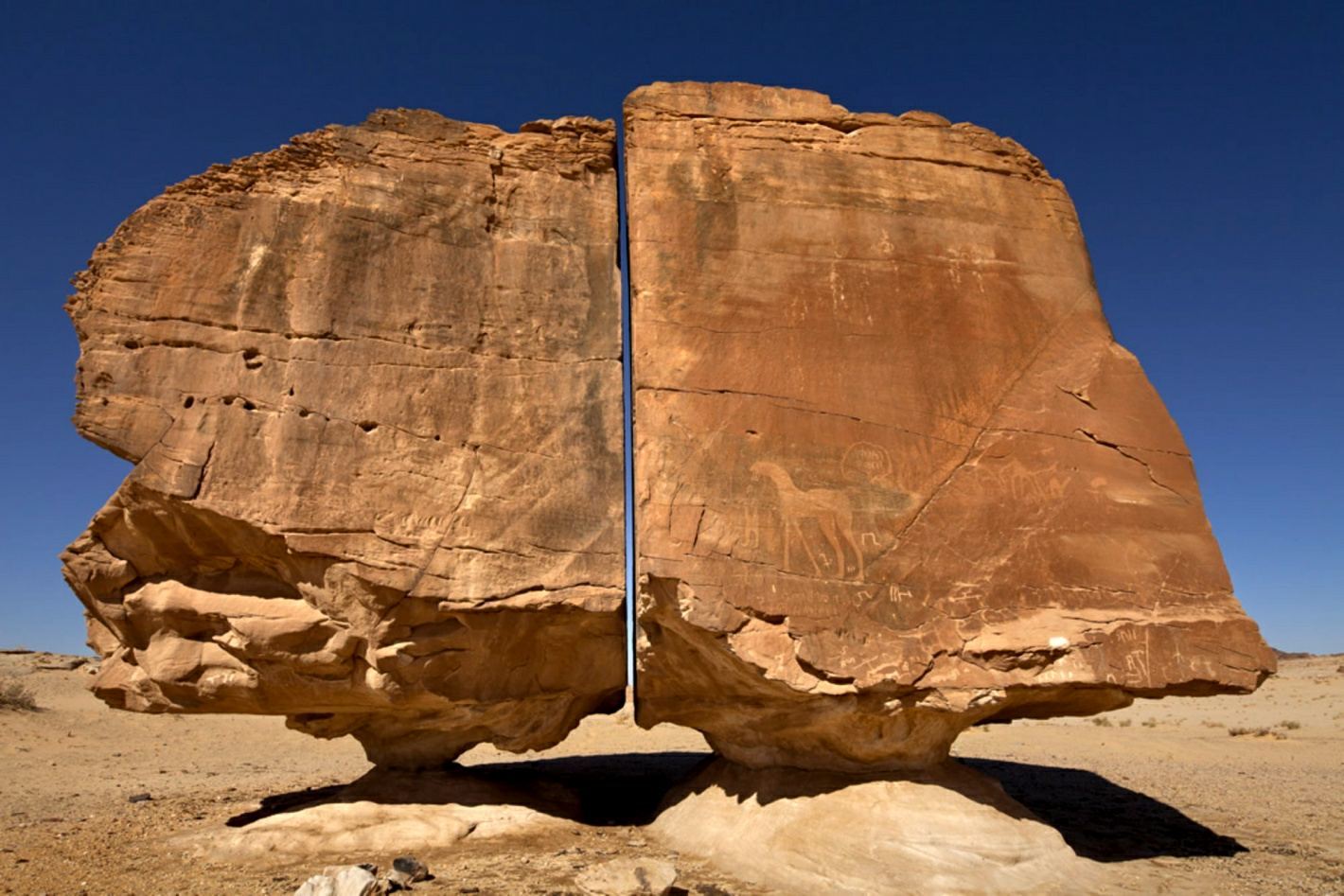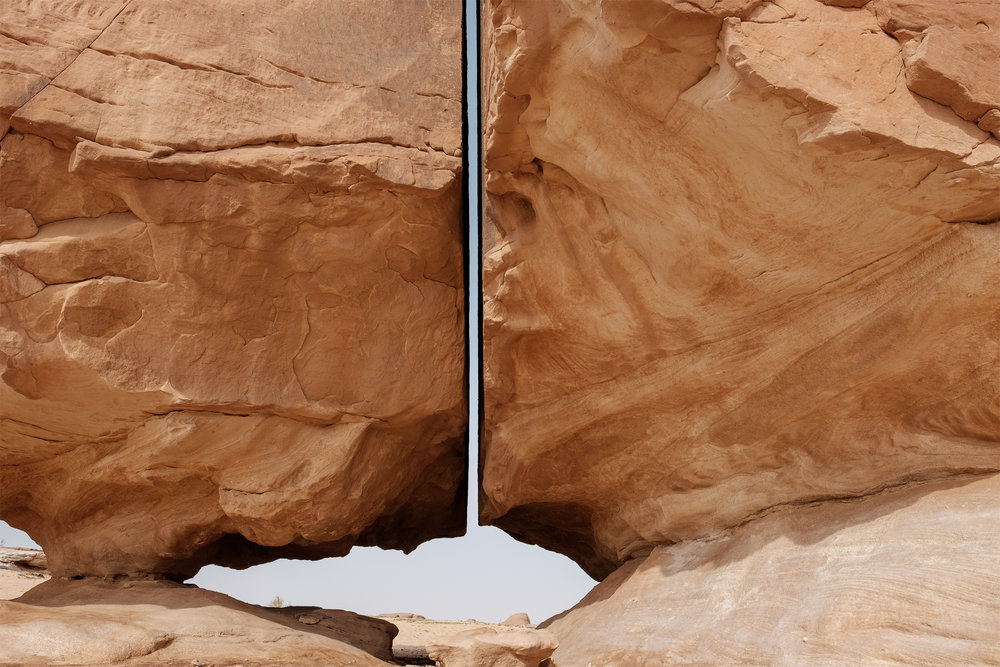The Al-Naslaa rock in Saudi Arabia is a mysterious structure split with great precision and adorned with unusual symbols. The two halves remain perfectly balanced for centuries, drawing thousands of visitors annually to marvel at its symmetry and speculate about its origins.

The Al-Naslaa megalith, discovered by Charles Huver in 1883, has been a topic of debate among experts, with various theories about its origin. The rock remains perfectly balanced on two bases, suggesting it may have been crafted with advanced tools. Recent archaeology confirms human presence in the area dating back to the Bronze Age (3000 BC-1200 BC).
In 2010, the Saudi Commission for Tourism and National Heritage revealed the discovery of another rock near Tayma bearing a hieroglyphic inscription of pharaoh Ramses III. This led researchers to speculate that Tayma may have been a significant land route connecting the Red Sea coast and the Nile Valley.
Some experts propose natural explanations for the enigmatic split in the rock. One popular theory is that the ground beneath one of the supports shifted, causing the rock to break. Another hypothesis is that it may have formed from a volcanic dike or a weaker mineral that solidified.
Other researchers believe that it may be an ancient pressure crack pushed against the other, or possibly an ancient fault line. Fault movement often creates a weakened rock zone that erodes more easily than the surrounding rock.

However, these are just a few of the many intriguing theories surrounding the Al-Naslaa rock. What is certain is that the highly precise cut that splits the stone in two has always sparked more questions than answers.
According to historical accounts, the earliest reference to the oasis city appears as "Tiamat" in Assyrian inscriptions dating back to the 8th century BC. During this time, the oasis had developed into a prosperous city, abundant with water wells and impressive architecture.
Cuneiform inscriptions, which may date back to the 6th century BC, have been found by archaeologists in the oasis city. Notably, during this period, the Babylonian king Nabonidus retreated to Tayma for religious rituals and prophecy-seeking, leaving the rule of Babylon to his son Belshazzar.
The area has a rich historical background, as it is referenced multiple times in the Old Testament, under the name Tema, a son of Ishmael.


